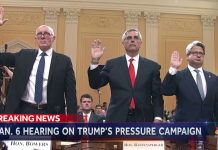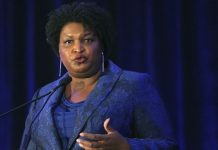International Monetary Fund (IMF) Policy Responses to COVID-19
Created in 1945, the IMF is governed by and accountable to the 189 countries that make up its near-global membership.
The International Monetary Fund (IMF) is an organization of 189 countries, working to foster global monetary cooperation, secure financial stability, facilitate international trade, promote high employment and sustainable economic growth, and reduce poverty around the world.
The IMF’s primary purpose is to ensure the stability of the international monetary system—the system of exchange rates and international payments that enables countries (and their citizens) to transact with each other. The Fund’s mandate was updated in 2012 to include all macroeconomic and financial sector issues that bear on global stability.
IMF Latest summary of United States of America fiscal response to COVID-19
The US is facing a widening outbreak of COVID-19 that has claimed the lives of about 24,000 Americans and infected more than 600,000 persons across all 50 states. In response, the U.S. has implemented a range of measures including travel restrictions, social distancing, declaration of states of emergency, closure of schools, bars and restaurants, and increased testing.
Key American Policy Responses as of April 16, 2020
FISCAL
- An estimated US$2.3 trillion (around 11% of GDP) Coronavirus Aid, Relief and Economy Security Act (“CARES Act”). The Act includes (i) US$250 billion to provide one-time tax rebates to individuals; (ii) US$250 billion to expand unemployment benefits; (iii) US$24 billion to provide a food safety net for the most vulnerable; (iv) US$510 billion to prevent corporate bankruptcy by providing loans, guarantees, and backstopping Federal Reserve 13(3) program; (v) US359 billion in forgivable Small Business Administration loans and guarantees to help small businesses that retain workers; (vi) US$100 billion for hospitals, (vii) US$150 billion in transfers to state and local governments and (viii) US$49.9 billion for international assistance (including SDR28 billion for the IMF’s New Arrangement to Borrow).US$8.3 billion Coronavirus Preparedness and Response Supplemental Appropriations Act and US$192 billion Families First Coronavirus Response Act. They together provide around 1 percent of GDP for: (i) Virus testing; transfers to states for Medicaid funding; development of vaccines, therapeutics, and diagnostics; support for the Centers for Disease Control and Prevention responses. (ii) 2 weeks paid sick leave; up to 3 months emergency leave for those infected (at 2/3 pay); food assistance; transfers to states to fund expanded unemployment insurance. (iii) Expansion of Small Business Administration loan subsidies. And (iv) US$1.25 billion in international assistance. In addition, federal student loan obligations have been suspended for 60 days.

MONETARY AND MACRO-FINANCIAL
- Federal funds rate were lowered by 150bp in March to 0-0.25bp. Purchase of Treasury and agency securities in the amount as needed. Expanded overnight and term repos. Lowered cost of discount window lending. Reduced existing cost of swap lines with major central banks and extended the maturity of FX operations; broadened U.S. dollar swap lines to more central banks; offered temporary repo facility for foreign and international monetary authorities.Federal Reserve also introduced facilities to support the flow of credit, in some cases backed by the Treasury using funds appropriated under the CARES Act. The facilities are: (i) Commercial Paper Funding Facility to facilitate the issuance of commercial paper by companies and municipal issuers; (ii) Primary Dealer Credit Facility to provide financing to the Fed’s 24 primary dealers collateralized by a wide range of investment grade securities; (iii) Money Market Mutual Fund Liquidity Facility (MMLF) to provide loans to depository institutions to purchase assets from prime money market funds (covering highly rated asset backed commercial paper and municipal debt); (iv) Primary Market Corporate Credit Facility to purchase new bonds and loans from companies; (v) Secondary Market Corporate Credit Facility to provide liquidity for outstanding corporate bonds; (vi) Term Asset-Backed Securities Loan Facility to enable the issuance of asset-backed securities backed by student loans, auto loans, credit-card loans, loans guaranteed by the Small Business Administration, and certain other assets; (vii) Paycheck Protection Program Liquidity Facility (PPPLF) to provide liquidity to financial institutions that originate loans under the Small Business Administration’s Paycheck Protection Program (PPP) which provides a direct incentive to small businesses to keep their workers on the payroll; (viii) Main Street Lending Program to purchase new or expanded loans to small and mid-sized businesses; and (ix) Municipal Liquidity Facility to purchases short term notes directly from state and eligible local governments.Supervisory action. Federal banking supervisors encouraged depository institutions to use their capital and liquidity buffers to lend, to work constructively with borrowers affected by COVID-19, and indicated COVID-19 related loan modifications would not be classified as troubled debt restructurings. Holdings of U.S. Treasury Securities and deposits at the Federal Reserve Banks could be temporarily excluded from the calculation of the supplementary leverage ratio for holding companies. Other actions include offering regulatory reporting relief and adjusting supervisory approach to temporarily reduce scope and frequency of examinations and give additional time to resolve non-critical, existing supervisory findings.Regulatory action. Lower the community bank leverage ratio to 8 percent. Provide extension transition for the Current Expected Credit Loss accounting standard. PPP covered loans will receive a zero percent risk weight, and assets acquired and subsequently pledged as collateral to the MMLF and PPPLF facilities will not lead to additional regulatory capital requirements. Allow early adoption of “the standardized approach for measuring counterparty credit risk”. And there will be a gradual phase-in of restrictions on distributions when a firm’s capital buffer declines.Fannie Mae and Freddie Mac have announced assistance to borrowers, including providing mortgage forbearance for 12 months and waiving related late fees, suspending reporting to credit bureaus of delinquency related to the forbearance, suspending foreclosure sales and evictions of borrowers for 60 days, and offering loan modification options.
EXCHANGE RATE AND BALANCE OF PAYMENTS
- No measures.
The IMF works with governments around the world to modernize their economic policies and institutions, and train their people. This helps countries strengthen their economy, improve growth and create jobs.![]()
SOURCE ⇒ IMF

Consider supporting AMIBC™. Contribute by clicking on the advertisers and sponsors featured on AMIBC™ and please utilize them. Readers from around the world, like you, make our work possible. We need your support to deliver quality, vetted, investigative journalism – and to keep it open for everyone. At a time when factual, honest reporting is critical, your support is essential in protecting our editorial independence.
The narratives and issues impacting all Americans is tantamount to the AMIBC™ platform. Every contribution, however big or small, is valuable for our future. Make sure to join the AMIBC Founders Club to maximize the total advantage of being a subscriber.
American Internet Broadcasting™ Corp
All Rights Reserved ® & © 2020
































